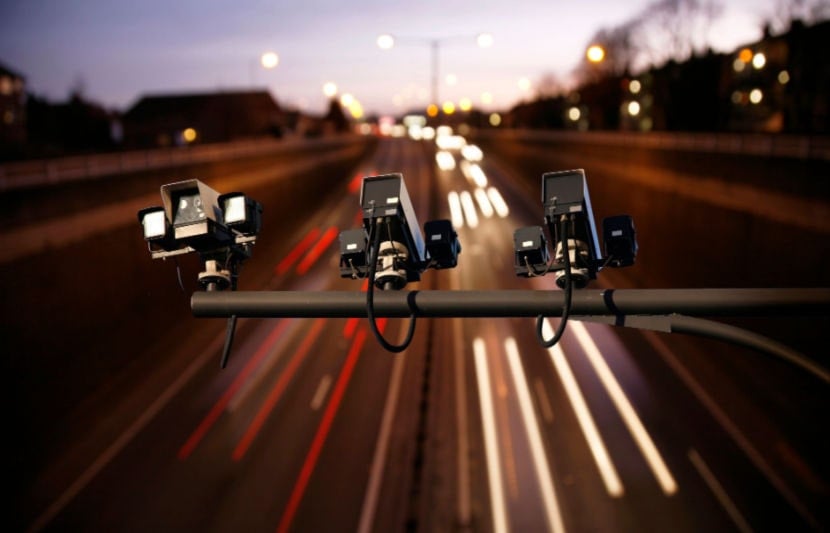Speed cameras are designed to catch drivers breaking the limit. But do they allow any leeway before issuing a fine? Here's what you need to know about speed camera tolerances in the UK.

Key takeaways
- Many UK police forces use a 10% + 2 mph tolerance. But it's not a legal right. Even 1 mph over could land you a fine.
- Speed camera tolerances are discretionary, vary by region, and can change without notice.
- Speeding fines start at £100 and 3 penalty points, but more serious offences can lead to court, higher fines, and more points.
- Mobile and fixed cameras use different technologies and may apply different tolerances.
- Penalty points typically stay on your licence for 4 years or 11 years for serious offences. Many insurers ask about convictions from the past 5 years.
What is a speed camera tolerance?
Speed camera tolerance refers to the small buffer above the legal speed limit that some cameras allow before triggering a penalty. This is usually done to account for slight inaccuracies in speedometers and camera systems.
Many UK police forces follow a guideline of 10% + 2 mph. That means, in a 30 mph zone, you could be travelling up to 35 mph before facing penalties. But this is a guideline, not a right. You can still be penalised for going even 1 mph over the limit.
UK fixed and mobile speed camera tolerances
Speed camera tolerances exist to improve driver safety. One of the reasons is so drivers have their eyes on the road instead of their speedometer. They also exist because there are variations in speedometers and the speed cameras themselves.
Just because a tolerance exists doesn’t mean you’re in the clear. The Metropolitan Police said that no matter what the threshold, drivers should always stick to the speed limit and never exceed it.
What our motor insurance expert says
"Speed camera tolerances are discretionary. That means police can still prosecute you even if you go just 1 mph over the speed limit. And a speeding conviction comes with a fine, points on your licence and higher future car insurance costs. It's not worth it- you should always drive at a speed that's legal, safe and appropriate for the road."

Confused.com contacted 45 UK police forces*. Of the 39 that responded, 26 shared information about when their speed cameras activate if a driver is going above the speed limit.
Most police forces have a tolerance of 10% plus 2mph above the limit before a speed camera ‘flashes’.
Here’s what we found when we asked police forces about their speed camera thresholds:
| Police force | Speed camera tolerance |
|---|---|
|
Avon & Somerset Police
|
10% + 2 mph
|
|
Cheshire Constabulary
|
10% + 2 mph
|
|
City of London Police
|
10% + 2 mph
|
|
Cumbria Constabulary
|
10% + 2 mph
|
|
Derbyshire Constabulary
|
10% + 2 mph
|
|
Dorset Police
|
10% + 2 mph
|
|
Essex Police
|
10% + 2 mph
|
|
Gloucestershire Constabulary
|
10% + 2 mph
|
|
Gwent Police
|
10% + 2 mph
|
|
Humberside Police
|
10% + 2 mph
|
|
Kent Police
|
10% + 2 mph
|
|
Lancashire Constabulary
|
10% + 3 mph
|
|
Leicestershire Police
|
10% + 2 mph
|
|
Lincolnshire Police
|
10% + 2 mph
|
|
Metropolitan Police Service
|
10% + 2 mph
|
|
Norfolk Constabulary
|
10% + 2 mph
|
|
Northamptonshire Police
|
10% + 2 mph
|
|
North Wales Police
|
10% + 2 mph
|
|
Police Scotland
|
10% + 2 mph
|
|
Police Service Northern Ireland (PSNI)
|
10% + 4 mph
|
|
South Wales Police
|
10% + 2 mph
|
|
South Yorkshire Police
|
10% + 2 mph
|
|
Suffolk Constabulary
|
10% + 2 mph
|
|
Sussex Police
|
10% + 2 mph
|
|
Thames Valley Police
|
10% + 2 mph
|
|
West Mercia Police
|
10% + 2 mph
|
*We issued a Freedom of Information request in February 2023 asking "Is there a speed tolerance on the fixed cameras used in your force area, and if so, what is the tolerance? For example, 10% + 2mph."
What types of speed cameras are used in the UK?
There are different types of speed cameras on UK roads, and they don’t all work the same way:
| Camera type | How it works | Common use |
|---|---|---|
|
Gatso
|
Radar-based, rear-facing. Flashes as a car passes over road sensors.
|
Fixed spots, often urban roads
|
|
Truvelo
|
Forward-facing, uses road sensors and infrared. Doesn’t flash.
|
Urban roads and junctions
|
|
HADECS 3
|
Digital smart motorway camera. Often no visible flash.
|
Smart motorways e.g. M25
|
|
SPECS
|
Uses ANPR to calculate average speed between two or more points.
|
Long motorway stretches
|
|
Mobile cameras
|
Operated by police vans using radar or laser devices. Can catch cars in both directions.
|
Rural roads, accident blackspots
|
Do average speed camera tolerances work in the same way?
Average speed cameras are different from normal fixed and mobile speed cameras. Average speed cameras check your speed over several miles, rather than measuring your speed over a short distance.
This means they should be more accurate and so might not have the same tolerance levels as other speed cameras.
What's the range of a mobile speed camera van?
The typical range of a mobile speed camera van is around 1-2 miles on a straight stretch of road. As you might expect, they can't see through or around bends. The speed detecting technology used also impacts the overall range of the mobile speed camera.
Speed camera tolerances and their enforcement
Speed camera tolerances are used at the discretion of the police to follow the rules around speeding, speed cameras, and the law.
Technically, the Association of Chief Police Officers (ACPO) allows a tolerance of 10% + 2 mph on speeding before taking punitive action. So they’re within their rights to punish drivers that break the speed limit by even just a few miles per hour.
You can’t rely on these discretionary thresholds as a defence if you’re flagged for speeding. Going even 1 mile an hour over the speed limit counts as speeding, and you could be punished accordingly if caught.
Depending on the severity of the speeding offence, you might:
- Be offered to take a speed awareness course
- Get a fine
- Have points on your licence
- Be banned from driving
How many cars can a speed camera van catch at once?
Mobile speed cameras can catch speeding vehicles in either direction, coming towards or away from the speed camera van. They can only capture 1 car at any one time, but the technology is fast. They can usually record a car’s speed quickly and move onto another vehicle.
What are the penalties for speeding in the UK?
If the offence is minor, you might be asked to go on a speed awareness course rather than take the fine and points.
For more serious offences, though, that option isn’t available and the minimum penalty for speeding is a £100 fine and 3 penalty points on your licence.
Speeding fines are based on a percentage of your weekly income, with the minimum fine being £100.
This is in addition to getting points on your licence. The Confused.com speeding fine calculator lets you work out any potential fine.
I've been flashed by a mobile speed camera van. How long will it be before I get a ticket?
If you've been flashed by a speed camera - whether mobile or fixed, you should get your Notice of Intended Prosecution (NIP) within 14 days of the offence. The NIP is sent to the car's registered keeper. This is taken from DVLA information about the car based on its number plate.
This means you might get a speeding ticket sent to you if one of your named drivers was the one doing the speeding.
Do I need to tell my car insurance company about a speeding ticket?
Yes - you have to declare any unspent speeding convictions or points on your driving licence to your car insurance company.
Although points remain on your licence for 4 years, insurers use them in their calculations for 5 years.
As a result, you could see your car insurance costs go up because insurers consider you to be a bigger risk.
You don't need to tell them if you've taken a speed awareness course unless they ask you.


